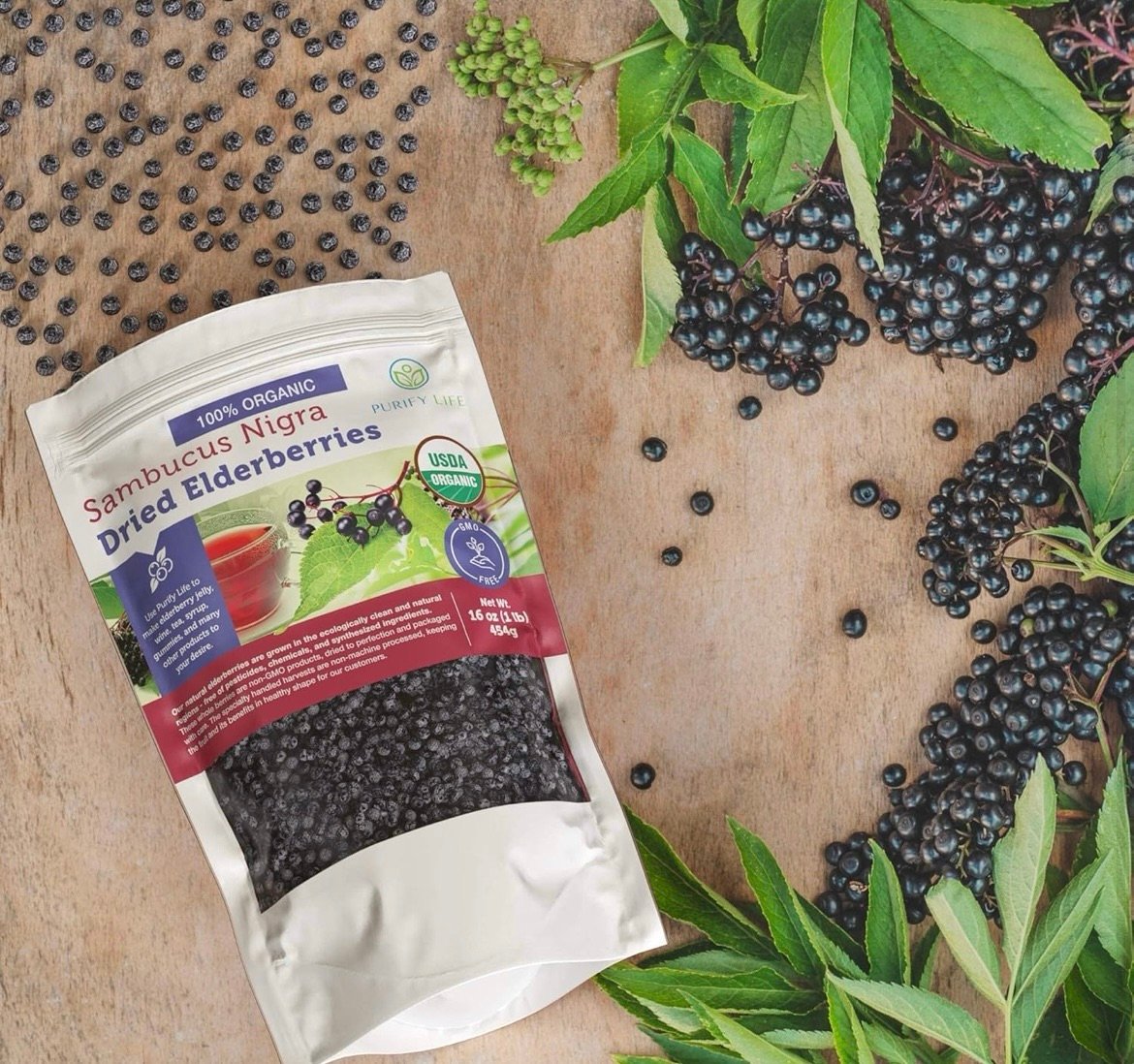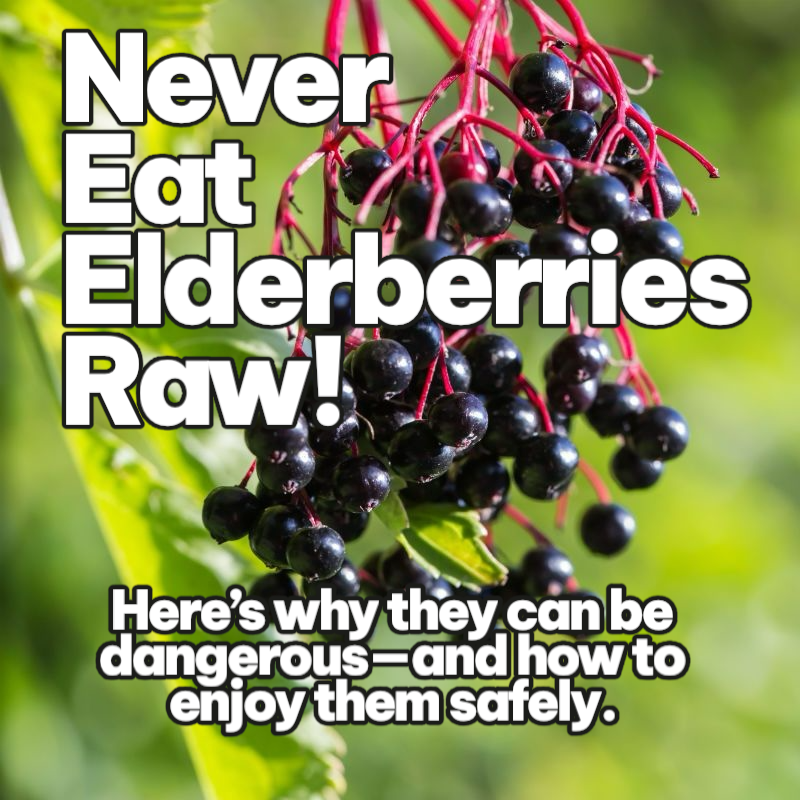
What Got Me Wondering About Eating Dried Elderberries
I’ll never forget the day I found a sealed bag of dried elderberries in the back of our pantry — probably leftover from that one year I was obsessed with DIY elderberry syrup. I stood there wondering, “Can you eat dried elderberries just like that?” I mean, they look like raisins, kind of. And they smell like they belong in a tea blend.
So, like any normal person, I Googled it. And wow — I’m glad I did. Turns out it’s not as simple as popping a handful like trail mix. If you’ve ever had this same question, you’re in the right place. I’ll break it all down based on real experience, actual research, and just a little bit of trial and error. (Spoiler: don’t make my mistake.)

Can You Eat Dried Elderberries Straight from the Bag?
Let’s get this out of the way first: No, you shouldn’t eat dried elderberries raw — even if they’re in a sealed, food-safe bag. Drying elderberries does not destroy the natural plant toxins inside them.
Here’s the science-y part that matters: elderberries (especially the Sambucus nigra species) contain cyanogenic glycosides, which release cyanide when digested. Sounds dramatic, but even a small amount can cause unpleasant symptoms like stomach cramps, nausea, and vomiting. And yeah, that includes raw dried elderberries.
Now, some people will tell you that dried elderberries are totally fine because the drying process helps reduce toxins. And that’s partially true… but not completely. The toxins are still present in the seeds and skins unless heat is applied to fully break them down. That’s why elderberry syrup is simmered and not just made with cold water and berries.
✅ If you’re asking “Can I eat dried elderberries raw?” or “Are dried elderberries safe to eat?” — the answer is a solid no, not unless they’ve been cooked.
👉 Also see: How Much Elderberry Is Safe to Take Daily?
Why Elderberries Can Be Toxic (Even When Dried)
Elderberries are one of those “superfoods with a catch.” While they’re packed with immune-boosting antioxidants, they also contain plant compounds that become toxic when metabolized in the human body. These include:
- Cyanogenic glycosides – which can convert into cyanide
- Lectins – proteins that can irritate the gut lining
The good news? Cooking (like boiling or simmering) breaks these down. The bad news? Drying alone doesn’t. That means if you grab a handful of raw dried elderberries and toss them in your mouth, you’re gambling with nausea at best and diarrhea at worst. And that’s not how I like to start my day.
I once ate two spoonfuls of lightly steeped elderberries from a tea blend — and let’s just say, I paid the price a few hours later. Lesson learned.

How Most People Safely Use Dried Elderberries
The most common — and safe — way people use dried elderberries is by simmering them into something delicious. This is how we make:
- Elderberry syrup — a family favorite in our house every cold season
- Elderberry tea — steeped properly, then strained
- Homemade gummies — fun for kids and a great daily dose
- Tinctures and oxymels — for the herbal crowd
- Jam or jelly — yep, you can absolutely turn elderberries into jam
The key with all of these is cooking. You’ll often see recipes calling for boiling dried elderberries for 30–45 minutes. That amount of time ensures the toxins are neutralized, and you’re left with the good stuff.
We use this brand of dried elderberries at home and always simmer them down before using. My go-to is a homemade syrup with cinnamon sticks, cloves, and just a touch of honey (after it cools, of course).
👉 See also: How to Make Elderberry Syrup Without Honey

So, Are Dried Elderberries Safe to Eat at All?
Yes — but only after they’ve been cooked. You can absolutely enjoy all the benefits of dried elderberries, but popping them raw isn’t the way. They need at least 30 minutes of simmering in water to be safe.
After they’ve been simmered, strained, or turned into syrup, gummies, or tea — they’re not just safe, they’re awesome. Tons of people (myself included) use elderberry products daily to help boost immunity, especially during cold and flu season.
So next time you ask yourself, “Can you eat dried elderberries?” — remember the rule: Only if they’re cooked. If you want a quick fix, grab a pre-made elderberry gummy or extract that’s already been processed safely.
👉 Related read: What Is the Ideal Elderberry Dosage for Adults?

Common Symptoms If You Eat Raw Dried Elderberries
Alright, here’s the not-so-fun part. If you ignore the warnings and eat dried elderberries straight from the bag, here’s what might happen:
- Nausea
- Vomiting
- Diarrhea
- Stomach cramping
- Weakness or dizziness
These symptoms typically show up within 1–2 hours and can last for several more. It’s rarely life-threatening unless a lotis eaten, but it’s definitely not pleasant.
When I was first experimenting with elderberry years ago, I thought I could get away with chewing a few raw dried ones like trail mix. Huge mistake. That “healthy snack” turned into a full afternoon on the couch regretting every decision.
👉 Want to skip the drama? Go for elderberry products that are already safe to take.
Can You Eat Cooked Elderberries?
Absolutely — once they’ve been properly cooked, elderberries are safe and nutritious. In fact, cooked elderberries are the only way I ever eat them. They have this deep, earthy berry flavor that’s kind of like a mix between blackberries and mulberries with a slightly bitter kick. When cooked down into a syrup or jam, the flavor becomes much smoother and richer.
We often add cooked elderberries into our homemade pancakes or muffins, and nobody even knows they’re eating something that once needed a “toxic” warning label. The trick is to always start with dried or fresh elderberries and simmer them at least 30 minutes — no shortcuts. That cooking time breaks down the lectins and neutralizes the cyanogenic compounds so they’re safe and tasty.
👉 Check this out too: Elderberry vs. Elderflower: What’s the Difference?

What About Wild Elderberries? Can You Eat Those?
Now this is where a lot of people mess up — and I get it, foragers love free food. But when it comes to can you eat wild elderberries, the answer is: only after proper identification and cooking.
In the U.S., the most commonly foraged elderberry is Sambucus canadensis (American elderberry), which is generally safe once cooked. But there are also varieties like red elderberries (Sambucus racemosa) that are higher in toxins and shouldn’t be eaten even after drying unless thoroughly cooked and used in small amounts.
Unless you’re a trained forager or using a wild edibles guide, don’t play roulette with berries you found on a hike. Wild elderberries can look similar to toxic lookalikes like pokeberries. If you do harvest wild elderberries, make sure they’re fully ripe, deep purple/black, and always cook them thoroughly.
👉 Learn more about wild elderberry risks and lookalikes in this deep dive on elderberry safety.
Are There Any Benefits to Eating Elderberries?
Oh yeah — elderberries are known for their antioxidant-rich, immune-supporting powers. That’s why they’re in everything from wellness shots to cold season gummies.
Here are some of the top benefits backed by both studies and real-world use:
- Immune system support – thanks to flavonoids and anthocyanins
- Antiviral properties – some research shows elderberry extract can shorten flu duration
- High in antioxidants – which help fight inflammation and oxidative stress
- May reduce cold symptoms – people swear by it during sniffle season
We use elderberry syrup almost daily when cold weather hits. I’m not saying it’s magic, but I’ve definitely noticed fewer “sick days” since we started incorporating it into our routine.
👉 Want to dive deeper? Read The Real Health Benefits of Elderberry (and What’s Hype).

Is It Ever Okay to Eat Elderberries Fresh?
If you’re thinking of picking a juicy elderberry off the bush and tossing it in your mouth — don’t. Raw, fresh elderberries are just as toxic as dried ones, if not more. They still contain those sneaky cyanogenic compounds, and eating even a handful raw can send your gut into a spin.
Fresh elderberries are beautiful and tempting when they’re ripe and deep purple, but they still need to be cooked before consumption. Whether they come straight off the bush or from your local farmers market — always simmer, strain, and sweeten before serving.
And don’t forget, the leaves, stems, and unripe berries are even more toxic than the ripe fruit. So if you’re prepping fresh ones, be meticulous about removing every last stem.
👉 You might like this too: Do Elderberries Really Help You Sleep Better at Night?
Can You Freeze Dried Elderberries?
Yes! If you’ve got bulk bags of dried elderberries (which I often do), you can absolutely store them in the freezer to extend shelf life. Just make sure they’re in an airtight, moisture-proof container like a glass jar or vacuum-sealed bag.
Freezing won’t destroy the toxins (they’re still unsafe to eat raw), but it will keep the berries from absorbing humidity and getting moldy or stale. I tend to keep a small container in the pantry for weekly use and stash the rest in the freezer. They’ll stay good for at least a year that way — maybe more.
👉 Curious about using dried elderberries in new ways? Check out: The Best Ways to Store and Use Elderberries

So… Can You Eat Dried Elderberries or Not?
To wrap this up clearly: you can’t eat dried elderberries raw — but you can eat them after they’ve been thoroughly cooked. Whether you’re making syrup, tea, jam, or gummies, the cooking process is key to making elderberries safe and beneficial.
I’ve been using dried elderberries for years, and once you get the hang of preparing them the right way, it becomes second nature. They’re a powerful, tasty, and even fun addition to your wellness routine — just don’t skip the simmering!
And now you know: if someone ever asks, “Can you eat dried elderberries?”, you’ll be able to confidently say, “Yes — but only after you cook them!”
👉 One last must-read: Can Elderberries Be Poisonous? Busting the Myths and Facts
As an Amazon Associate we earn from qualifying purchases through some links in our articles.